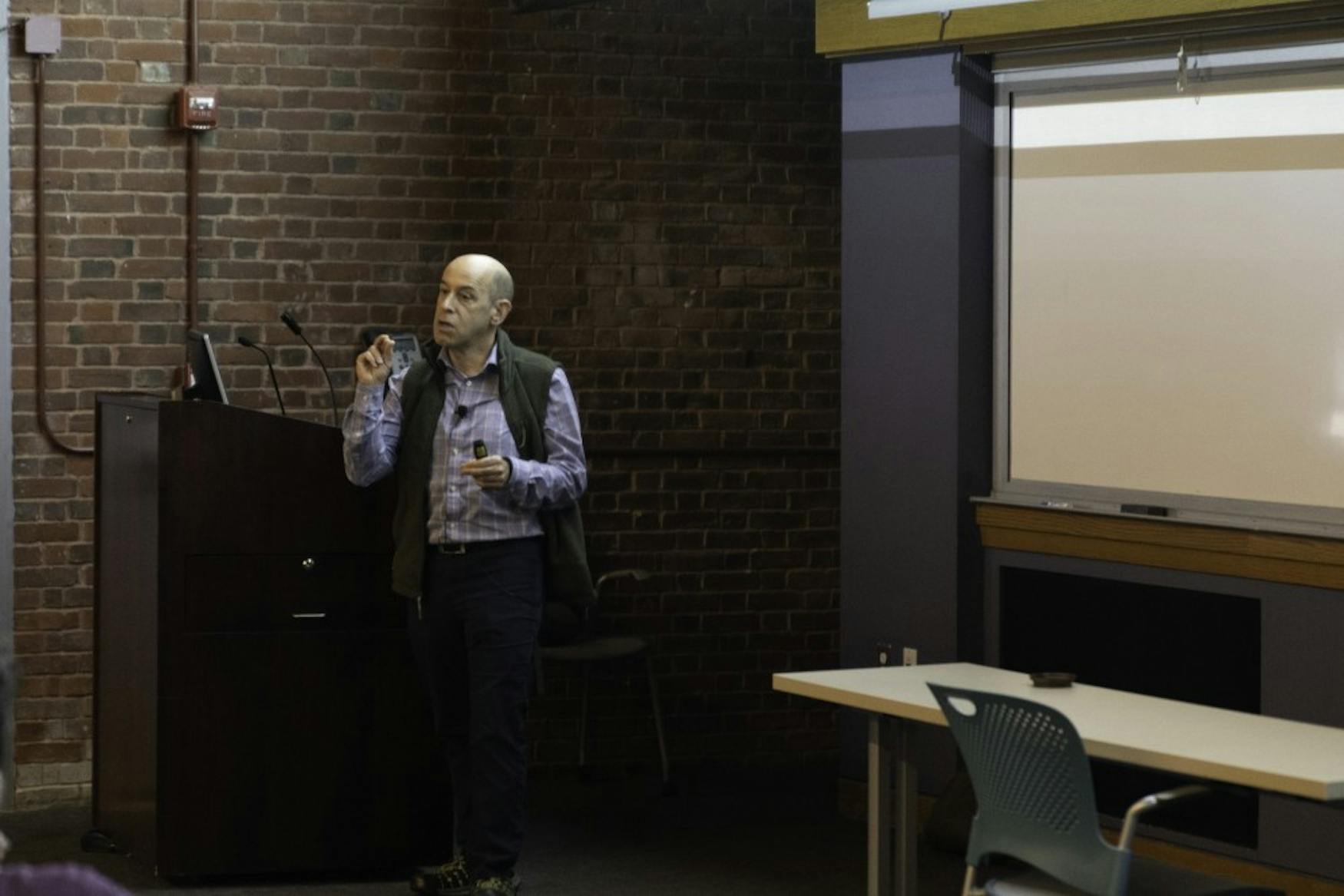Speakers discuss land trusts, conservation
The event brought awareness to a lesser-known aspect of addressing climate change.
The Environmental Studies Program hosted a talk last Tuesday with Deputy Director of the New England Forestry Foundation Frank Lowenstein as well as Boston-based conservation consultant Henry Tepper to discuss how land trusts can be used to address climate change. A land trust is a nonprofit organization that works to conserve the land through “acquiring land or conservation easements (or assisting with their acquisition) and/or stewarding/managing land or conservation easements,” per the Land Trust Alliance website.
Land trusts use a conservation easement, a “voluntary agreement in which a landowner voluntarily restricts development on their property but continues to own their property,” Tepper said. Land trusts are considered charitable contributions under the 170(c) IRS code and the landowner gets a tax deduction. There are 1,300 land trusts in the United States and over 100 land trusts in Massachusetts.
Tepper then turned to climate change, saying it is “so big an issue… that we sometimes throw up our hands and say, ‘What am I supposed to do about this?’” Land trusts are confronted with the issue of climate change and don’t know how to approach it because of the vastness of the issue, Tepper said.
Land trusts are “a pretty non-ideological business. Land trusts really work with any landowner who is committed to protecting their land,” Tepper said. Because land trusts involve people of many different backgrounds, Tepper explained, the Land Trust Alliance created a document “to let land trusts step back, be less intimidated and feel more positive about the fact that there were specific things that they could do to make a difference about climate change through their day-to-day land protection work.” Conservation on land through these trusts “can provide an important part of climate mitigation and adaptation,” Tepper explained in his presentation.
Lowenstein explained that climate change is “not a threat primarily to the natural world. It’s a threat to many species and it will cause major disruption in the natural world, but it is really a threat to civilization.”
One of the main culprits of climate change is the burning of fossil fuels, which emits large amounts of greenhouse gases such as carbon dioxide, methane and nitrous oxide into the atmosphere, Lowenstein said. This leads to climate sensitivity, which Lowenstein defined as how much the temperature changes after an increase in carbon dioxide in the atmosphere. Applying heat further impacts the climate, leading to higher temperatures and severe changes in weather, such as changes in precipitation and drought.
Lowenstein discussed the Paris Climate Accord, which aims to “strengthen the global response to the threat of climate change by keeping a global temperature rise this century well below 2 degrees Celsius above pre-industrial levels and to pursue efforts to limit the temperature increase even further to 1.5 degrees Celsius.” Since the ratification of the Paris Accord in 2015, several studies have been published that have alarmed Lowenstein. One Oct. 2018 study examined climate sensitivity and found that “the oceans have actually absorbed a lot more heat than people thought” since the 1960s, which means that “climate sensitivity is greater than people thought,” Lowenstein said. Later in 2018, the Intergovernmental Panel on Climate Change reported that warming should be limited to 1.5 degrees Celsius to avoid severe consequences in the near future.
Lowenstein concluded the discussion by looking at natural climate solutions discussing a three-part climate solution that started with “ending forest conversion to maintain carbon dioxide already stored.” By converting forests to other things, “deforestation releases carbon already stored and eliminates future potential to store more,” Lowenstein said. The plan then moved to “exemplary forestry to remove and store more carbon dioxide,” which included better management of forests. The third part of the plan was building more “wood buildings to reduce emissions and store more carbon dioxide,” Lowenstein said, which would lower emissions and create a “different pattern of development.”
Lowenstein and Tepper will be teaching a course next semester, ENVS 108B, “Land Conservation in the United States: History and Practice.”



Please note All comments are eligible for publication in The Justice.